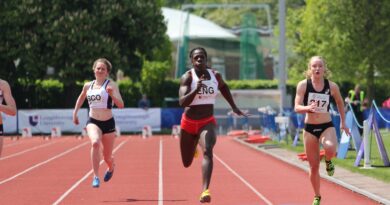Sports and Technology: Innovations Enhancing Training and Performance
Sports and technology have always been closely intertwined, with advancements in technology continually pushing the boundaries of training and performance in sports. In recent years, a plethora of innovative technologies have emerged, revolutionizing the way athletes train, monitor their performance, and gain a competitive edge. Let’s explore some of these cutting-edge innovations that are enhancing training and performance in the world of sports.
Wearable Technology:
Wearable devices such as fitness trackers, smartwatches, and GPS-enabled wearables have become ubiquitous in the sports industry. These devices provide athletes with real-time data on parameters like heart rate, distance covered, speed, and even sleep quality. This information enables athletes and coaches to analyze performance, identify areas for improvement, and make data-driven decisions to enhance training programs.
Virtual Reality (VR) and Augmented Reality (AR):
VR and AR technologies have made significant advancements in sports training. VR allows athletes to immerse themselves in realistic virtual environments, providing simulated game scenarios for training purposes. This technology is particularly useful for enhancing decision-making skills, reaction time, and spatial awareness. AR, on the other hand, overlays digital information onto the real world, enabling athletes to receive real-time feedback and instructions during training sessions.
Biomechanical Analysis:
Biomechanics is the study of human movement and its interaction with sports equipment. Advanced motion capture systems and high-speed cameras are used to capture an athlete’s movements with incredible precision. This data is then analyzed to identify flaws in technique, optimize performance, and prevent injuries. Biomechanical analysis has been particularly valuable in sports like golf, tennis, and athletics.
Data Analytics and Artificial Intelligence (AI):
The advent of big data and AI has transformed sports analytics. Algorithms can now process vast amounts of data collected from training sessions and competitions, extracting valuable insights that were previously inaccessible. AI-powered systems can identify patterns, trends, and correlations, helping athletes and coaches make informed decisions. For example, AI can analyze an athlete’s performance data to suggest personalized training programs or provide real-time tactical advice.
Smart Equipment:
Technology has also revolutionized sports equipment, making it smarter and more efficient. For instance, smart basketballs and soccer balls can track metrics like spin rate, shooting accuracy, and trajectory. Smart tennis rackets can provide real-time data on stroke speed, ball impact, and the quality of shots. These advancements in equipment enable athletes to gain a deeper understanding of their performance and make necessary adjustments to excel in their respective sports.
Recovery and Injury Prevention:
Technological innovations have also contributed significantly to athlete recovery and injury prevention. Cryotherapy chambers, for example, use extremely cold temperatures to accelerate the recovery process, reduce inflammation, and relieve muscle soreness. Advanced imaging techniques, such as MRI and CT scans, help diagnose injuries accurately and guide treatment plans. Additionally, innovative rehabilitation tools and techniques, like robotic exoskeletons and virtual rehabilitation systems, aid in the recovery process and help athletes regain their fitness levels faster.
In conclusion, the integration of sports and technology has transformed the way athletes train and perform. From wearable devices to virtual reality, biomechanical analysis, data analytics, smart equipment, and advancements in recovery and injury prevention, the sports industry has embraced innovation to enhance training programs and maximize performance. As technology continues to evolve, we can expect even more exciting developments that will push the boundaries of sports and further empower athletes to reach their full potential.










